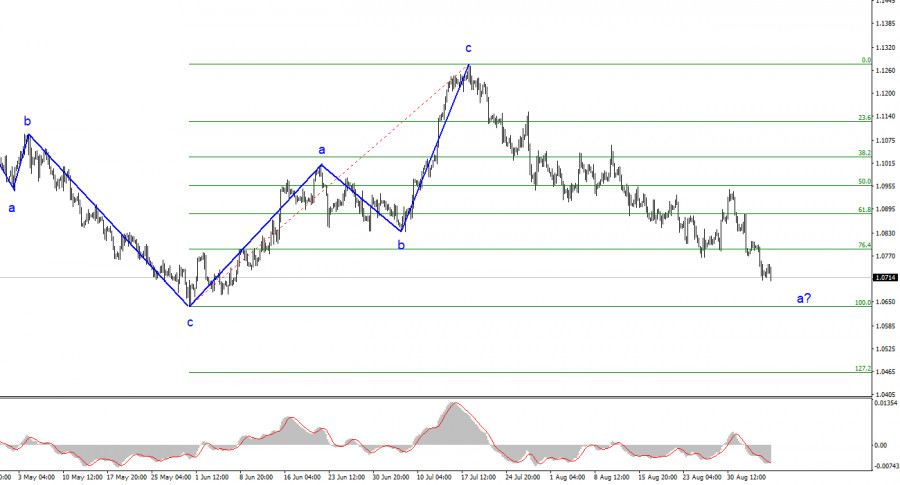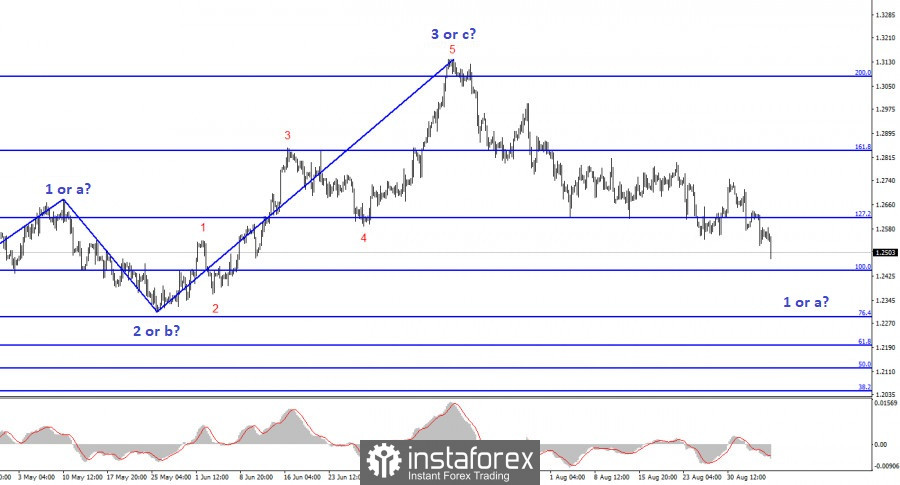The euro kicked off the new week with some negative traction. In previous articles, I've already drawn your attention to the statements of some members of the European Central Bank's Governing Council, which boiled down to a simple idea – the hawkish rhetoric is fading, and the ECB is preparing to conclude the process of tightening monetary policy. Thus, the decrease in demand for the euro is quite natural.

On Monday, ECB President Christine Lagarde refused to answer questions about the rate at the September meeting. Some of her colleagues actively hinted that rates should be kept at peak levels for as long as possible but didn't mention new rate hikes. On Wednesday, Peter Kazimir said that interest rates could rise by another 25 basis points. This could happen as early as next week, although a pause in September with a subsequent increase in October or December is also possible.
In my opinion, it doesn't matter when exactly the ECB will raise rates for the last time. The key point is that until the tightening process is complete, there is at most one more hike. Right now, it's not even so important how high inflation is in the European Union and how quickly it is decreasing because, for the market over the past year, rates have been the priority. Since the ECB may raise rates for the last time and the Federal Reserve may raise rates for the last time, it may seem that the euro and the dollar are in similar conditions. However, this is not the case. First, the sentiment suggests a decline. Second, the US currency has been falling for quite a while, and during this period, the Fed has raised rates more than the ECB. This implies that the euro is a bit more expensive than it should be. I believe that most factors currently favor further depreciation.
I would also like to note another statement from another member of the ECB's Governing Council, Francois Villeroy de Galhau, who stated that interest rates are near their peak, echoing Kazimir's rhetoric. Villeroy also noted that there is currently no recession, and inflation will not slow down to 2% until at least 2025. This implies that the central bank will not further tighten its policy to avoid causing a recession in the European economy, and they can afford to wait on inflation.
Based on the conducted analysis, I came to the conclusion that the upward wave pattern is complete. I still believe that targets in the 1.0500-1.0600 range are quite feasible. Therefore, I will continue to sell the instrument with targets located near the levels of 1.0636 and 1.0483. A successful attempt to break through the 1.0788 level will indicate the market's readiness to sell further, and then we can expect to reach the targets I've been discussing for several weeks and months.

The wave pattern of the GBP/USD pair suggests a decline within the downtrend. There is a risk of completing the current downward wave if it is d, and not wave 1. In this case, the construction of wave 5 might begin from the current marks. But in my opinion, we are currently witnessing the construction of the first wave of a new segment. Therefore, the most that we can expect from this is the construction of wave "2" or "b". I still recommend selling with targets located near the level of 1.2442, which corresponds to 100.0% according to Fibonacci.
The material has been provided by InstaForex Company - www.instaforex.comfrom Forex analysis review https://ift.tt/3SikxMZ
via IFTTT
